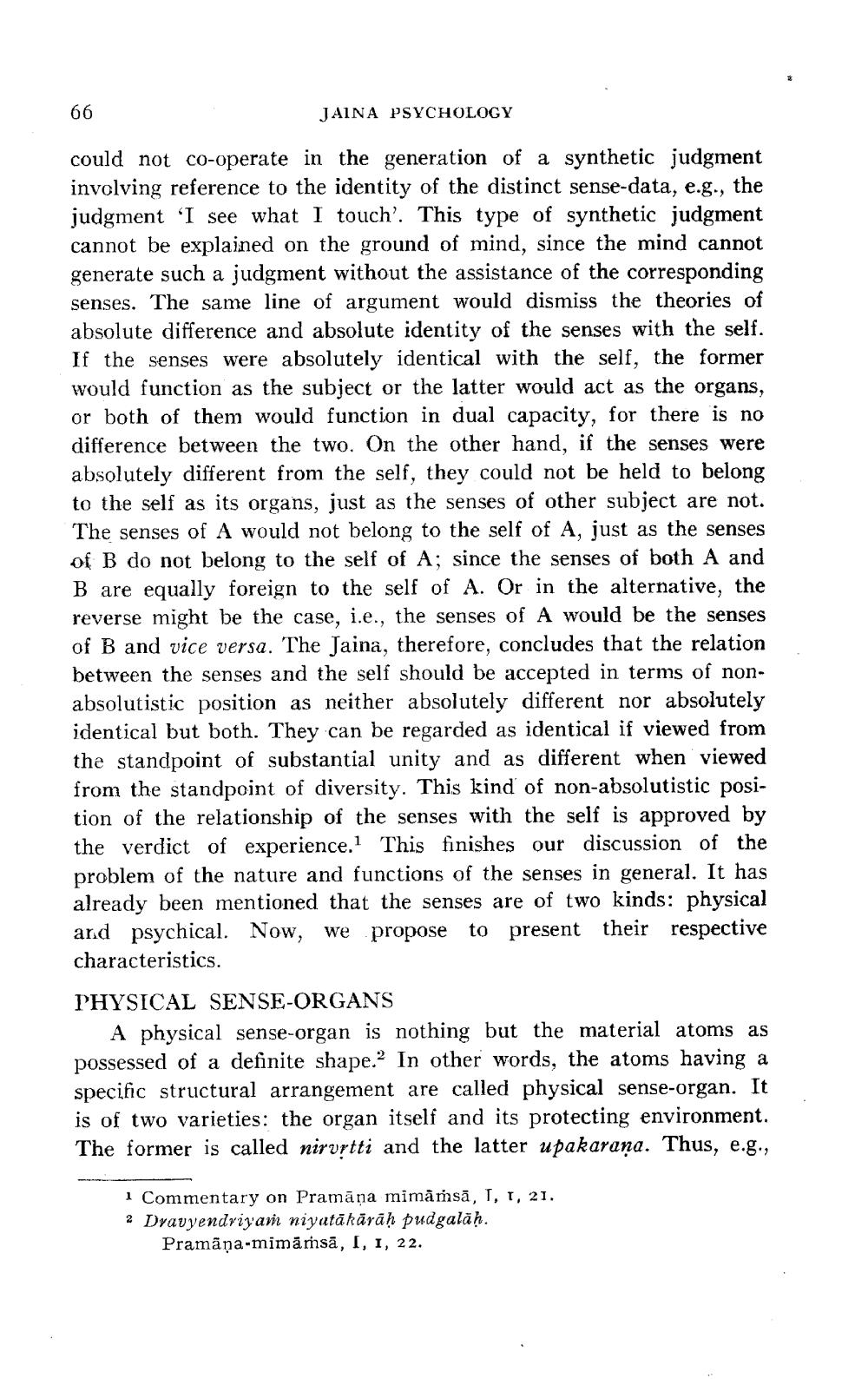________________
66
JAINA PSYCHOLOGY
could not co-operate in the generation of a synthetic judgment involving reference to the identity of the distinct sense-data, e.g., the judgment 'I see what I touch'. This type of synthetic judgment cannot be explained on the ground of mind, since the mind cannot generate such a judgment without the assistance of the corresponding senses. The same line of argument would dismiss the theories of absolute difference and absolute identity of the senses with the self. If the senses were absolutely identical with the self, the former would function as the subject or the latter would act as the organs or both of them would function in dual capacity, for there is no difference between the two. On the other hand, if the senses were absolutely different from the self, they could not be held to belong to the self as its organs, just as the senses of other subject are not. The senses of A would not belong to the self of A, just as the senses of B do not belong to the self of A; since the senses of both A and B are equally foreign to the self of A. Or in the alternative, the reverse might be the case, i.e., the senses of A would be the senses of B and vice versa. The Jaina, therefore, concludes that the relation between the senses and the self should be accepted in terms of nonabsolutistic position as neither absolutely different nor absolutely identical but both. They can be regarded as identical if viewed from the standpoint of substantial unity and as different when viewed from the standpoint of diversity. This kind of non-absolutistic position of the relationship of the senses with the self is approved by the verdict of experience. This finishes our discussion of the problem of the nature and functions of the senses in general. It has already been mentioned that the senses are of two kinds: physical and psychical. Now, we propose to present their respective characteristics.
PHYSICAL SENSE-ORGANS
A physical sense-organ is nothing but the material atoms as possessed of a definite shape. In other words, the atoms having a specific structural arrangement are called physical sense-organ. It is of two varieties: the organ itself and its protecting environment. The former is called nirvrtti and the latter upakarana. Thus, e.g.,
1 Commentary on Pramāna mimāṁsā, T, 1, 21. 2 Dravyendriyani niyatākārāḥ pudgalāḥ.
Pramāņa-mimāmsā, I, I, 22.




